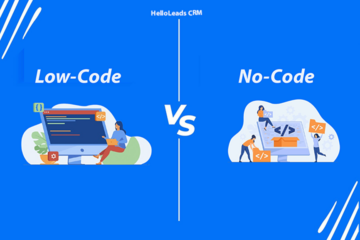
Today, branding is more crucial than ever before. It is not only consumed by the masses but it is also developed and curated by them through their own personal (public/social media) brand. Though we won’t be able to change the term, we can shift the perception of the brand from logos of luxury items (e.g., Gucci, Chanel) and larger-than-life businesses viewed as evil-doers (e.g., Exxon, Walmart) to modern necessity. “Brand” can be transformed into the holistic “aura” of a product or service provider (or both) if it is built and nurtured honestly and sincerely. We are permitted to admire (e.g., the iPhone), aspire to (e.g., a charitable organization), and occasionally draw inspiration from (e.g., TED Talks).
Brand positioning is a key concept in developing a successful brand strategy. It’s so important that some agencies use it as their very reason for existence. A successful brand strategy is about more than just slapping a logo on a product. You should not be trying to be everything to everyone. Instead, you should be looking to carve out a unique niche in the minds of your target audience. It should be easy for them to say the name of your brand and accurately visualize what your brand stands for. Brand positioning is a very complex concept, so we won’t be going into a lot of detail. Instead, we’ll provide a complete guide to successful brand positioning and how CRM can help in Brand Positioning
What is Brand Positioning?
The act of structuring a company’s offering and image to occupy a distinct place in the minds of the target market is referred to as brand positioning.
Simply put, good brand positioning occurs when people are able to connect immediately and see your brand as credible and useful.
The truth is that simply being distinct from your peers is not enough to win in the market. It requires more than simply being different. A company that wants to dominate the market needs to do something extraordinary to establish its brand. It could be your product or service, your mission or values, or anything else that distinguishes you in the market.
Even highly competitive businesses struggle to position their brand and explain how their firm is unique. Don’t let this deter you. Follow this 5-step strategy for brand positioning. The benefits of having a solid brand positioning statement are well worth the time and effort.
1. Where do You stand?
Understanding the brand entails analyzing the company’s and brand’s whole history, including its current brand positioning, the original positioning, how it has changed, and, most importantly, what the firm and brand stand for today.
Key questions to ask and answers to provide:
- What sets our firm and brand apart from the competition?
- What are the company’s and brand’s equity drivers?
- What have been the traditional methods of communicating the company’s voice and brand equity to consumers and customers alike?
We may then evaluate the company and brand sales history, including revenue, growth, and industry and category market share after we have a better understanding of the current brand consumer. Now that all companies have started adapting to technological advancements, churning up the previous sales reports and analyzing the current customer base based on their customer experiences is possible, Gracias CRM! It is also critical to consider the fundamental product and/or service offers.
2. Compare and Analyse
After you’ve assessed your company’s current challenges, you can start to imagine who and what your brand wishes to be. First, re-define your company’s basic beliefs and the emotions with which you want to be identified.
Make a list of distinguishing characteristics that sets you apart from the crowd. Look for ways to differentiate yourself, even if it means recognizing that a competitor is better than you in some aspects of your business.
Identifying your distinct value proposition once more should assist you in aligning with your target market and repositioning your brand. Taking a second look at your audience can help you identify your Unique Value Proposition for relationship building.
Taking a deeper look at CRM analytics will help you get a 360-degree view and enable you to look at stumbling blocks.
A distinct brand is all about standing out and doing what works best for your company. Begin by defining what ‘effective’ means for your product, brand, or offer. This is what will distinguish your brand and is an excellent starting point for an effective brand positioning plan. Take note of distinct products as you compare and dive in to see what you can do better than the competition.
4. Reset the Standards!
This characteristic will set your company apart and is a great beginning point for a successful brand positioning strategy. Take note of unique offers and delve in to see what you can do better than the competition as you compare and contrast. A distinguishing brand is all about sticking out and doing what is best for your business. Begin by defining “effective” about your product, brand, or service.
5. Make a statement about your brand’s positioning
A positioning statement is straightforward. It refers to a sentence or two that tells the viewer what distinguishes your brand. It also discusses the value and what makes it unique or a better pick than your competitors.
Writing a positioning statement might be difficult. Because you have a restricted number of words, you should make it brief and simple. As a result, there are key considerations to make while crafting an effective positioning statement.
Knowing your target market, product class, benefit, and results is sufficient information to craft the appropriate statement. You’re good to go if you can write a statement that answers these four points.
It is a one or two-line statement that communicates to your customers the distinctive value of your brand. Consider the following while developing a brand positioning statement:
- Who is your ideal customer?
- What is the name of your product category?
- What is your product’s advantage or the utility?
- What evidence exists to support such a benefit?
5. Test Run the Positioning Statement

Take the effort to position your brand in a way that appeals to your target audience. Once the brand positioning statement has been developed, put it to the test to observe how customers react to the new brand positioning.
It is critical to adjust and navigate comments to establish whether or not your brand positioning will have a substantial impact.
After you’ve decided on a positioning statement, it’s time to put it to the test. How? Simple, pilot it with your clients. Allow your clients to give you their honest feedback on your positioning statements. If the statement piques their curiosity, ask them how they feel after reading it. This works especially well with new customers. They are less sentimental than returning consumers and are more likely to provide unbiased feedback.
This feedback can be noted and analyzed these days with the help of the right CRM.
Brand positioning is critical in any firm. If you want to accomplish a sales breakthrough, you will have to use this instrument.
For those who have attempted brand positioning and failed to achieve the intended results, we have gone over several key factors that will assist you in developing a more effective brand positioning plan.
You will see a turnaround in your business if you follow all of the things outlined above.
Share this blog :













